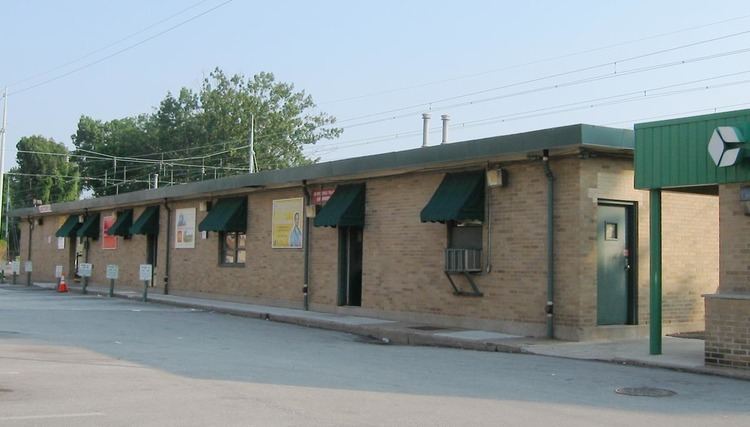Bicycle facilities 3 racks (12 spaces) Tracks 4 | Opened 1870 Platforms in use 2 | |
 | ||
Location 75 Station Road and Anderson AvenueArdmore, PA 19003 Parking 196 spaces (109 permit, 87 public daily) Address Ard, PA 19003, United States Similar Paoli station, Wynnewood station, Downingtown station, Bryn Mawr station, North Philadelphia station | ||
Ardmore station is a train station in Ardmore, Pennsylvania served by Amtrak and SEPTA Regional Rail. It is on Amtrak's Keystone Corridor Main Line and serves most Keystone Service trains, as well as most SEPTA Paoli/Thorndale Line trains. One Sunday eastbound Pennsylvanian trip formerly stopped in Ardmore, but this service was ended on November 7, 2011, with the consolidation of the Monday-Saturday and Sunday eastbound Pennsylvanian trip into a daily trip. It is located at Station Road and Anderson Avenue in Ardmore and serves the western suburbs of Philadelphia. The station is a one-story brick building with a flat roof built in the 1950s, which replaced an 1870 building that burned down. There are plans to build a new transit-oriented development in the area, including a new station building.
Contents
Station and surroundings
The ticket office and waiting room at this station are open weekdays 6:10 a.m. to 5:00 p.m. excluding holidays. An Amtrak QuikTrak machine is available when the station is open. SEPTA permit parking is available at the station, and the township provides additional metered parking in nearby lots.
This station is 8.5 track miles from Suburban Station. In 2011, the average total weekday SEPTA boardings at this station was 841 and the average total weekday SEPTA alightings was 834.
Nearby attractions include the Suburban Square shopping center, Ardmore Farmers Market, Brownie's 23 East, and other businesses in the downtown Ardmore shopping district along Lancaster Avenue.
Ardmore was the nearest station to the home of Stuart T. Saunders, the last CEO of both the Pennsylvania Railroad (PRR) until its 1968 merger with the New York Central and then of the Penn Central (PC) until its bankruptcy in 1976. Despite his proximity to the station, however, Saunders preferred to travel to his Philadelphia office by chauffeur-driven private car rather than riding his own trains. His detractors used this as an indication of both the inhospitable conditions of the train cars and management's detachment from the riding public.
Development
Lower Merion Township has considered plans to replace the station as part of a larger economic revitalization "transit oriented development" (TOD) project for the neighborhood. Parts of the plan, however, relied on using eminent domain to force the purchase of private property, which would then be transferred to a private developer. For this reason, it met significant opposition among some members of community.
In 2008 the plan of developer Dranoff Properties for the TOD project was accepted and the Philadelphia-based company was named to develop a $180 million mixed use project for the station area with ground breaking anticipated in 2012. In August, 2010, the Redevelopment Assistance Capital Program of the State of Pennsylvania made a $9 million grant to the project following an earlier $6 million grant made in 2008.
The old station
The old station at Ardmore was designed by the firm of Wilson Brothers and Company of Philadelphia as a two story stone structure with a slate roof. The walls were built of gneiss stone laid irregularly with sandstone lintels. It had a daylight basement by virtue of the land sloping to the rear, which served as housing for the agent, containing a bedroom, dining room, kitchen, and living room. The ground floor waiting room measured 20x35 feet, a ladies' room measuring 14x18 feet, a gentleman's smoking room 11x12 feet, a baggage room 8x12 feet, a telegraph office and ticket office of 9x18 feet, and a bedroom. The second story had three bedrooms and the signal tower.
